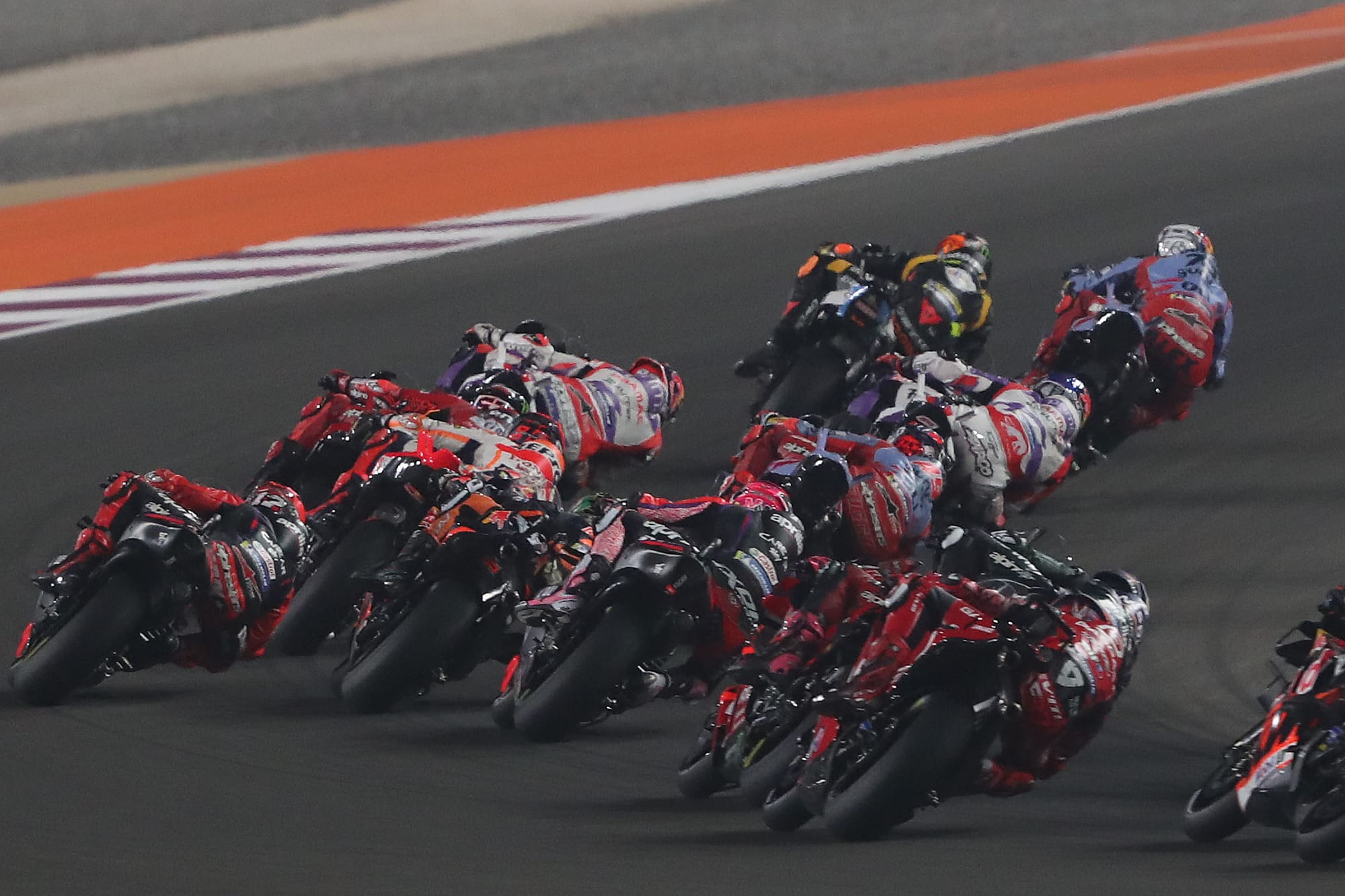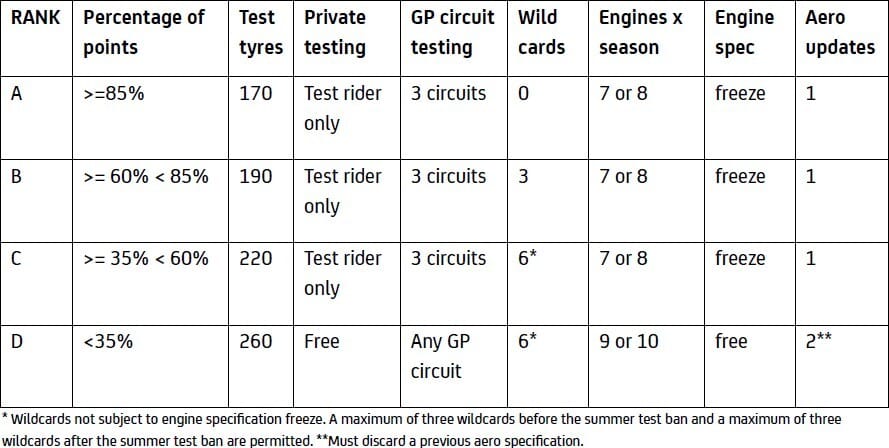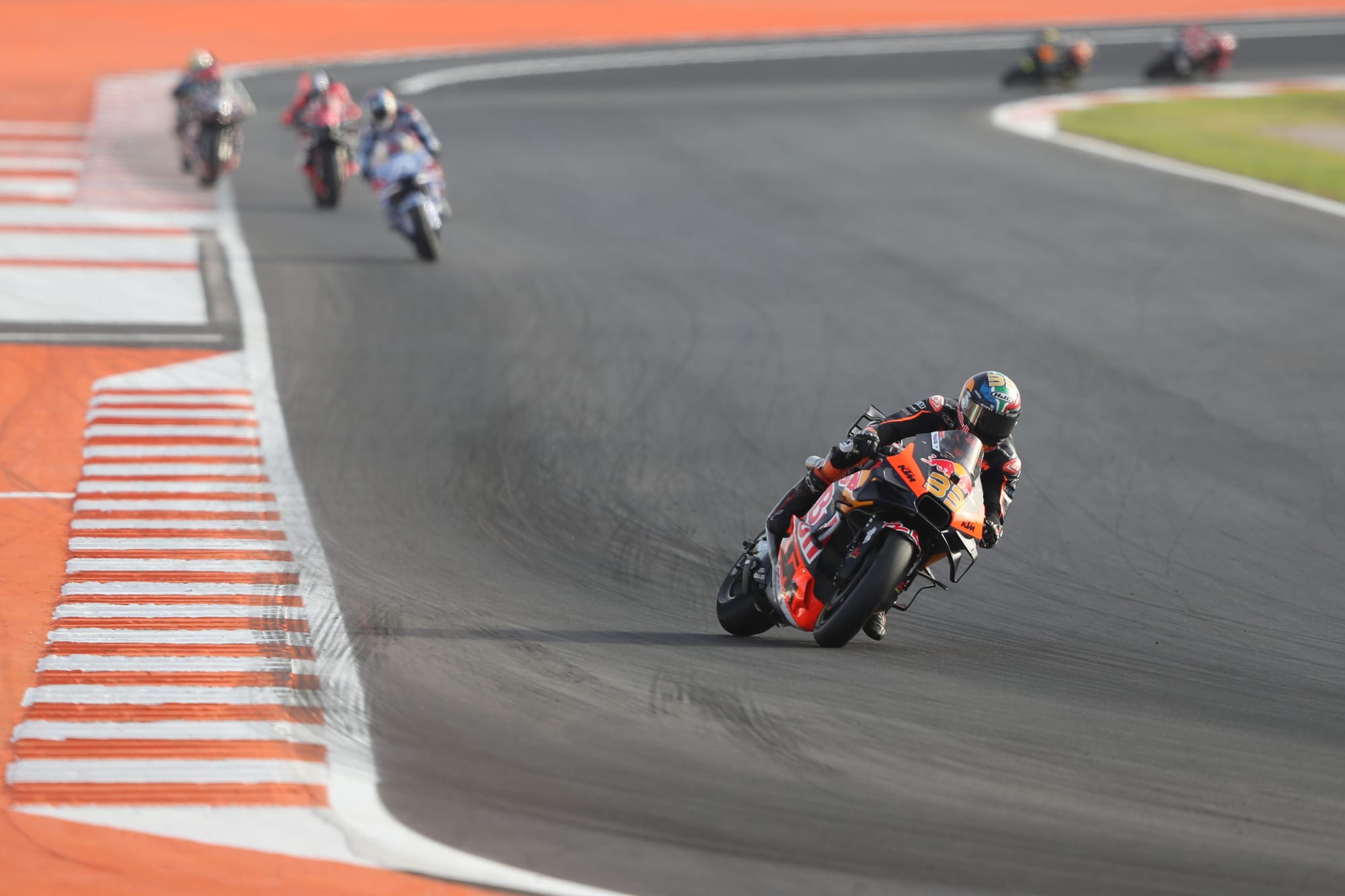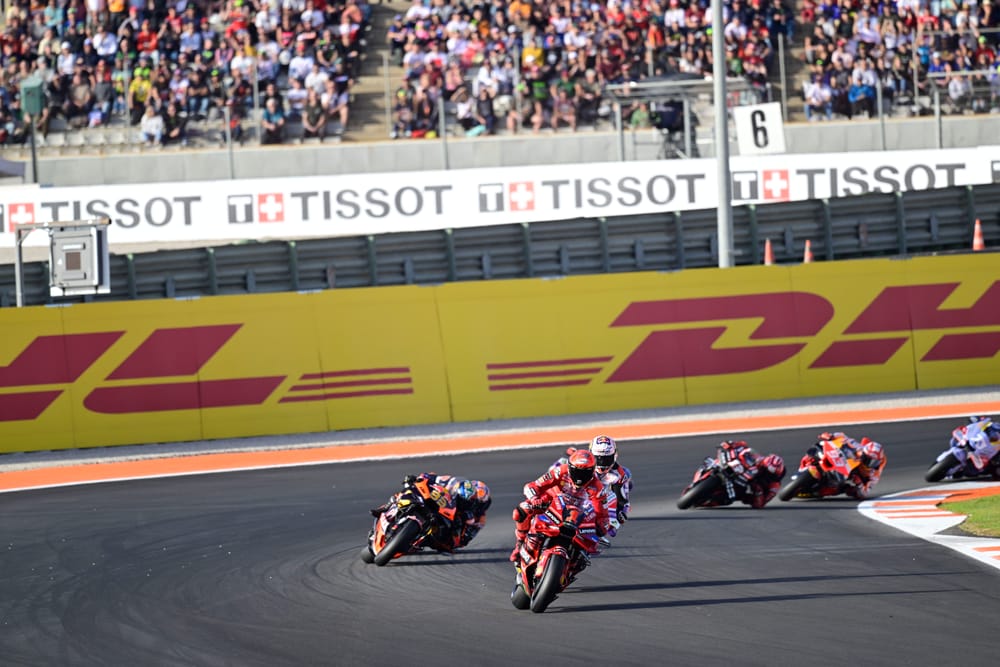MotoGP has unveiled a complicated new four-tier concession system that will take effect in 2024, after a concerted push to help the premier class's struggling manufacturers - namely Honda and Yamaha.
The two Japanese firms both accrued less than 200 points in the constructors' standings (in which every marque scores points on the basis of the tally brought in by its highest-scoring rider at each round) this year, while the dominant Ducati squad took home precisely 700.

It was known for a while that series promoter Dorna was trying to figure out a pathway to create competitive breaks for the two firms, and that, requiring unanimous approval, it would be able to get the European manufacturers - Ducati, KTM and Aprilia - to agree to measures in some capacity, despite the latter two firms' vocal opposition.
A much simpler factory concession system had already been in place in MotoGP, based on podiums scored over a two-year period, but none of the manufacturers qualified.
Fabio Quartararo was a title contender for Yamaha in 2022 and still recorded three grand prix podiums in 2023 despite a massive year-on-year decline, while Honda went as far as to win at COTA with 'one-year rental' Alex Rins.
The new system - which has four tiers rather than just having on/off concession status - is built on how many points a factory has scored in the manufacturers' championship relative to the total amount of points available.
In 2023, this was 728 points - it should've been 740 but for the cancellation of the sprint race at Phillip Island.
Concession system ranks
A (Ducati): 85% or more of total points available
B: Between 60% and 85% of total points available
C (KTM, Aprilia): Between 35% and 60% of total points available
D (Yamaha, Honda): Fewer than 35% of the total points available
Ducati's 700-point tally means it is over 80 points clear of the threshold for A rank, and its dominance in 2023 was such that none of the other brands qualify for B rank.
A-rank status means Ducati will have a significantly reduced test tyre allocation in 2024 (85 tyre sets, 15 fewer than currently available, as opposed to 130 for D-rank) and zero wildcards allowed.
Ducati has made frequent use of wildcards with test rider Michele Pirro.

B-rank will have three wildcards available, while the remaining two - covering all four non-Ducati participants as it stands - will have six wildcard outings at their disposal.
But there are crucial differences between the concession status that will be enjoyed by Aprilia/KTM under the current points distribution and the one for Yamaha/Honda.
As D-rank manufacturers, they will be allowed to test at any circuit on the calendar - rather than a maximum of three that is required to be nominated - with their full-time riders rather than the testers.
They will also not be subject to a start-of-season freeze in engine spec, and will have an extra aero update available to them during the season in addition to the single one currently allowed - although they will have to "discard a previous aero specification" in doing so.

KTM and Aprilia are thus still bound by the engine spec freeze, but their wildcards will be permitted to run engines of a different spec.
Crucially, the concession calculations will not be a year-on-year matter but will take place in half-year increments.
In the 2024 summer break, ranks will be re-assessed as per the points accrued from the end of the 2023 summer break till then.
The new system is clearly intended to counter Ducati's current advantage of having four teams and eight riders on the grid, as its data-sharing policy means they are able to indirectly divide duties in terms of weekend preparation during the current reduced-practice sprint format much more effectively than all the other brands' riders.
The four-tier system, meanwhile, appears to have been a way to placate KTM and Aprilia, who had been fairly vocal in feeling Honda and Yamaha were too competitive to enjoy concessions.
Though the new system is in place from the 2024 season onwards, it effectively kicks in right away - as MotoGP's 2024 season (and the calculations of test days within it) officially begins with Tuesday's collective test at Valencia



